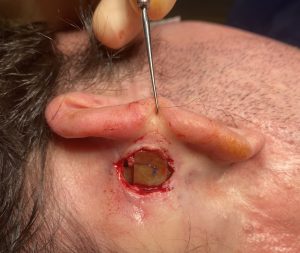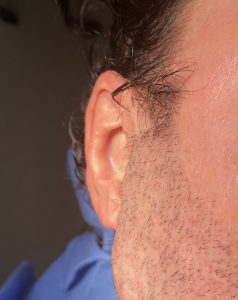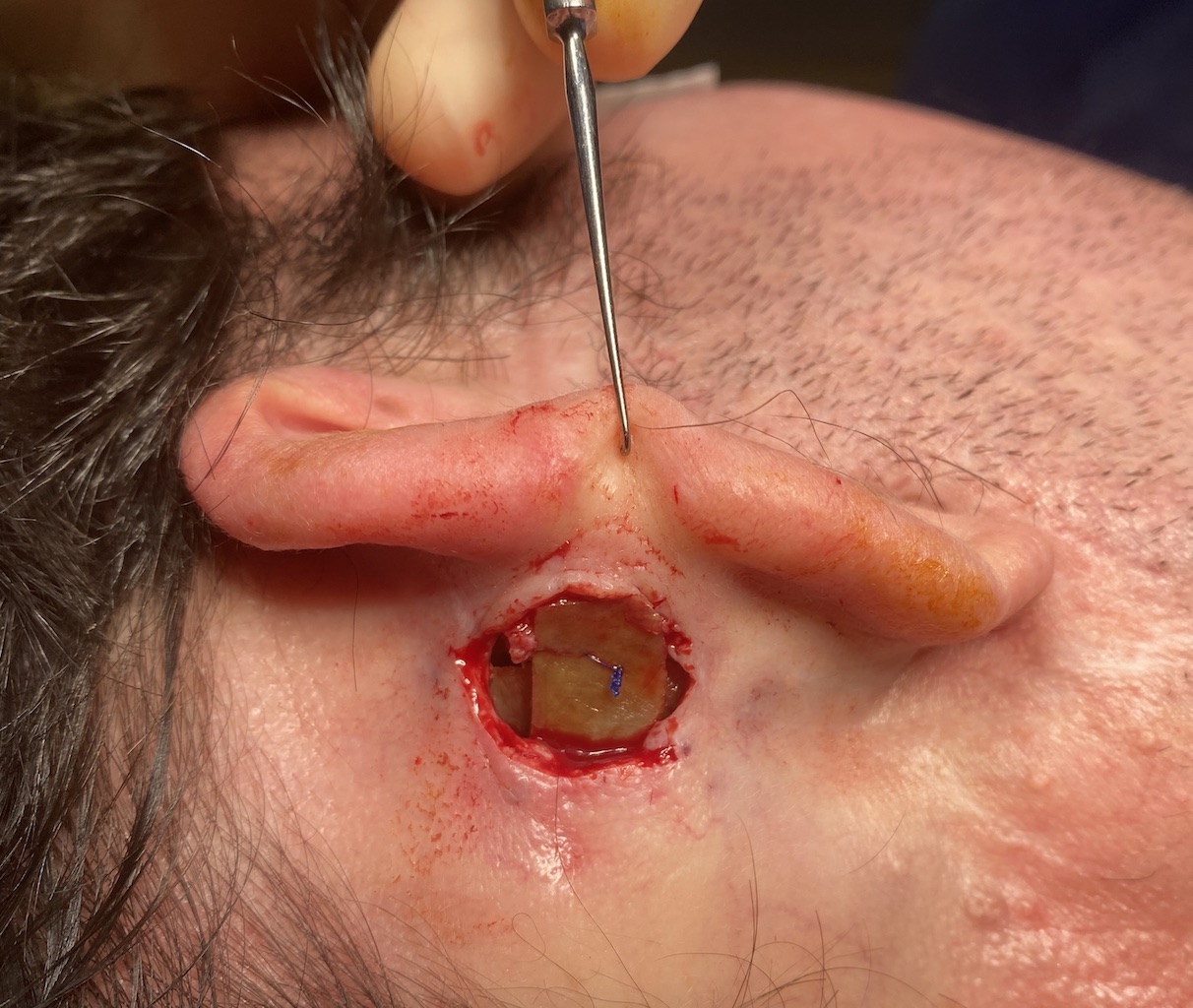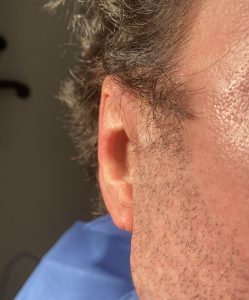The 2nd most common aesthetic ear surgery is a setback otoplasty. (earlobe manipulations is #1) In this procedure the shape of cartilages are changed by a variety of techniques to lessen the distance of the ear from the side of the head. (decreased auriculocephalic angle) But no matter which technique(s) are used for the setback of the ears it is as much an art form as an exact science. While there are established norms for the auriculocephalic angle there is not a good way to measure angles in surgery. The surgeon pays more attention not the shape of the ear as it is pulled back rather than any specific angular or linear measurement.
Like all aesthetic surgeries an additional variable in the aesthetic outcome is the patient’s interpretation of it. What one patient may see still see the ear as too far from the sides of the head, another may see it as too close. As a result there is always the risk in this type of ear surgery of an over- or under corrected result that may require a revision for a more aesthetically pleasing result to the patient.
By far the most common aesthetic dissatisfaction with setback otoplasties is that of overcorrection, the ear is pulled too close to the side of the head. This is consistently seen as the helical rim not being visible in the center of the ear (conchal level) behind the antihelical rim. When this is seen in the early postoperative period release of the some of the sutures holding the ear back will usually solve the problem even if conchal cartilage has been removed. But if several months or longer has passed since the initial surgery suture or tissue releases may be ineffective as the memory of the cartilage has changed.

When it comes to graft volume enough must be placed to provide adequate support but the limit is in being able close the postauricular skin over it.

The goal of this surgery is not to bring the ear completely back to its original position as there was a reason the surgery was done initially. Hence the term subtotal otoplasty reversal.
Dr. Barry Eppley
World-Renowned Plastic Surgeon




